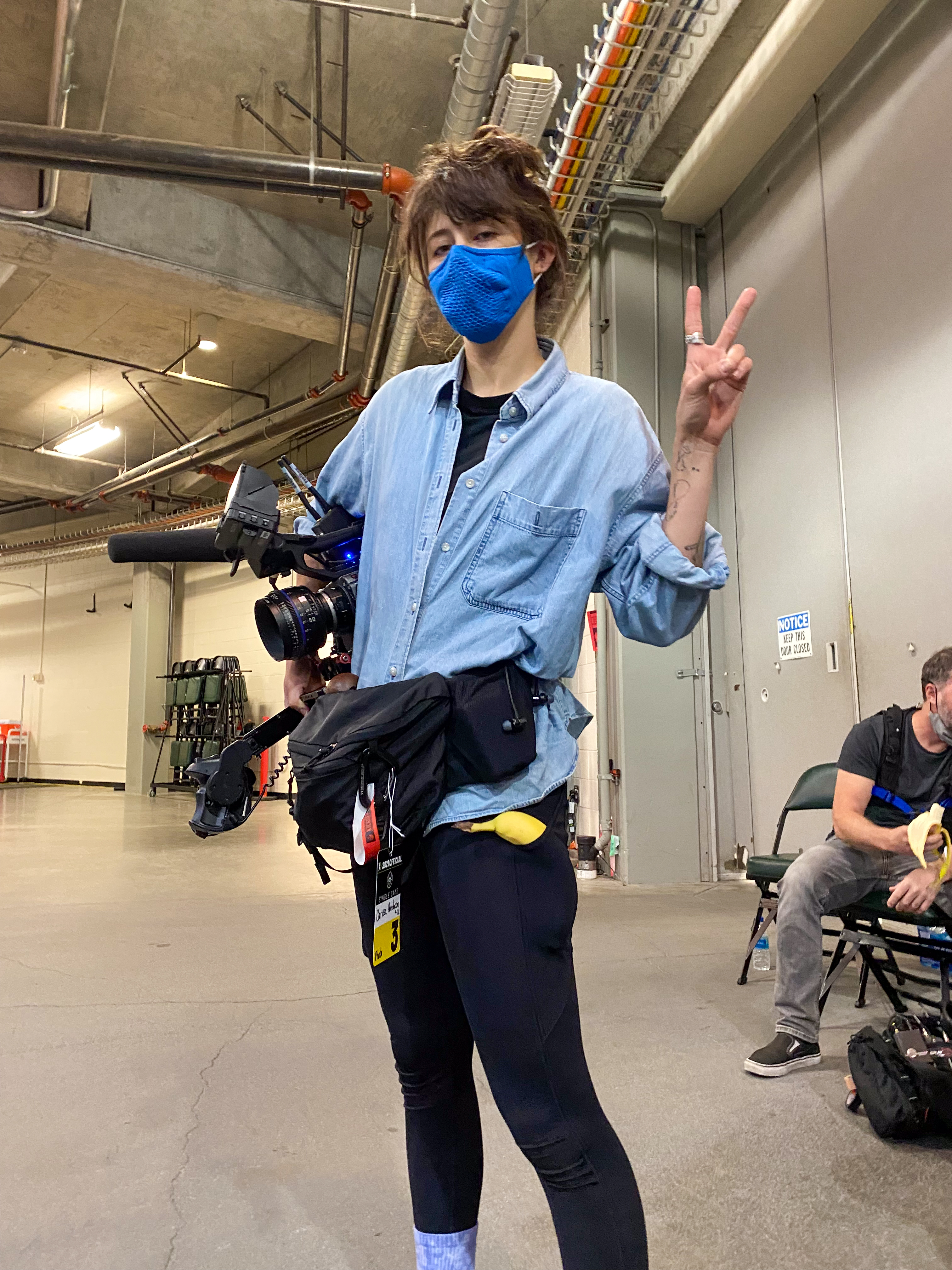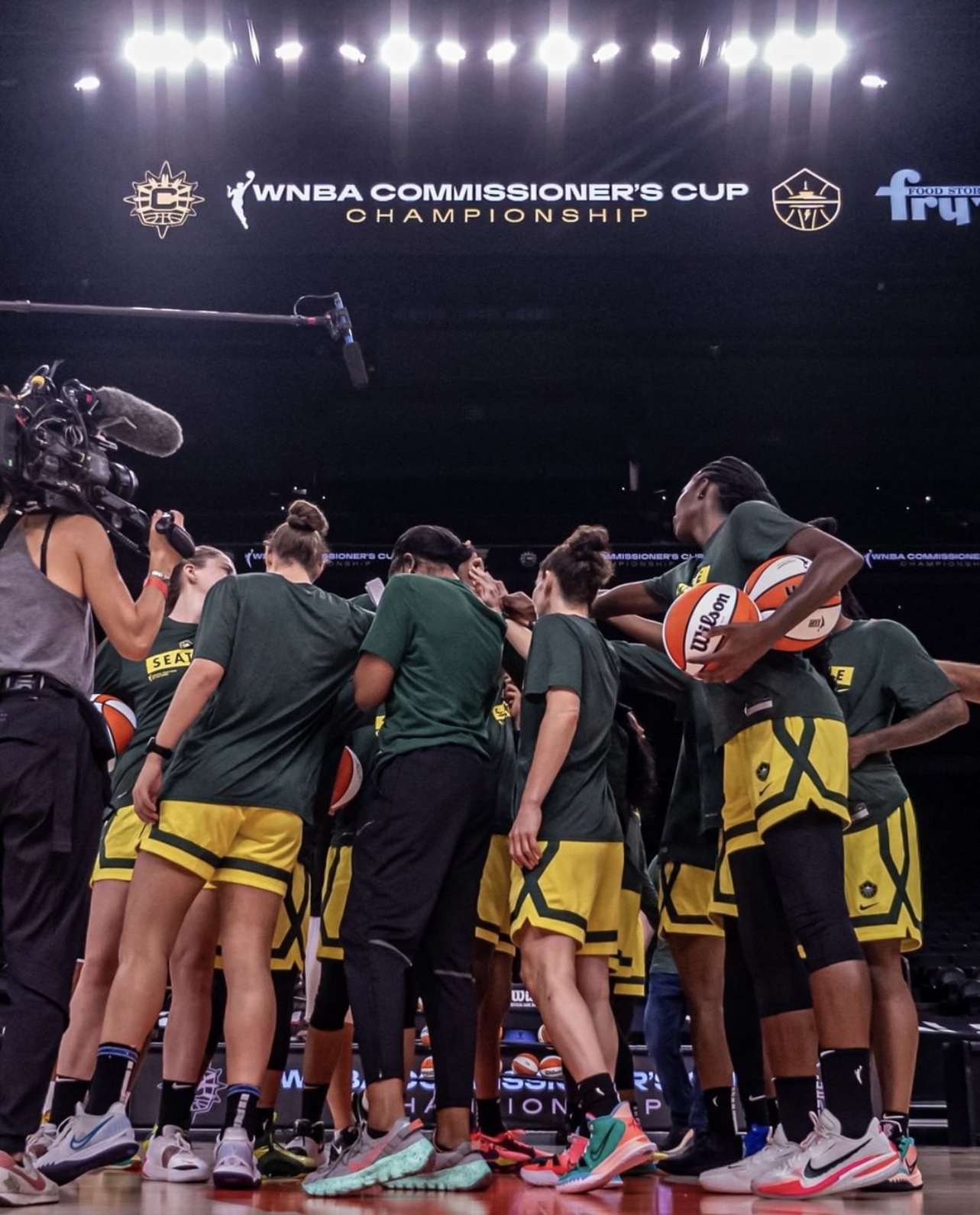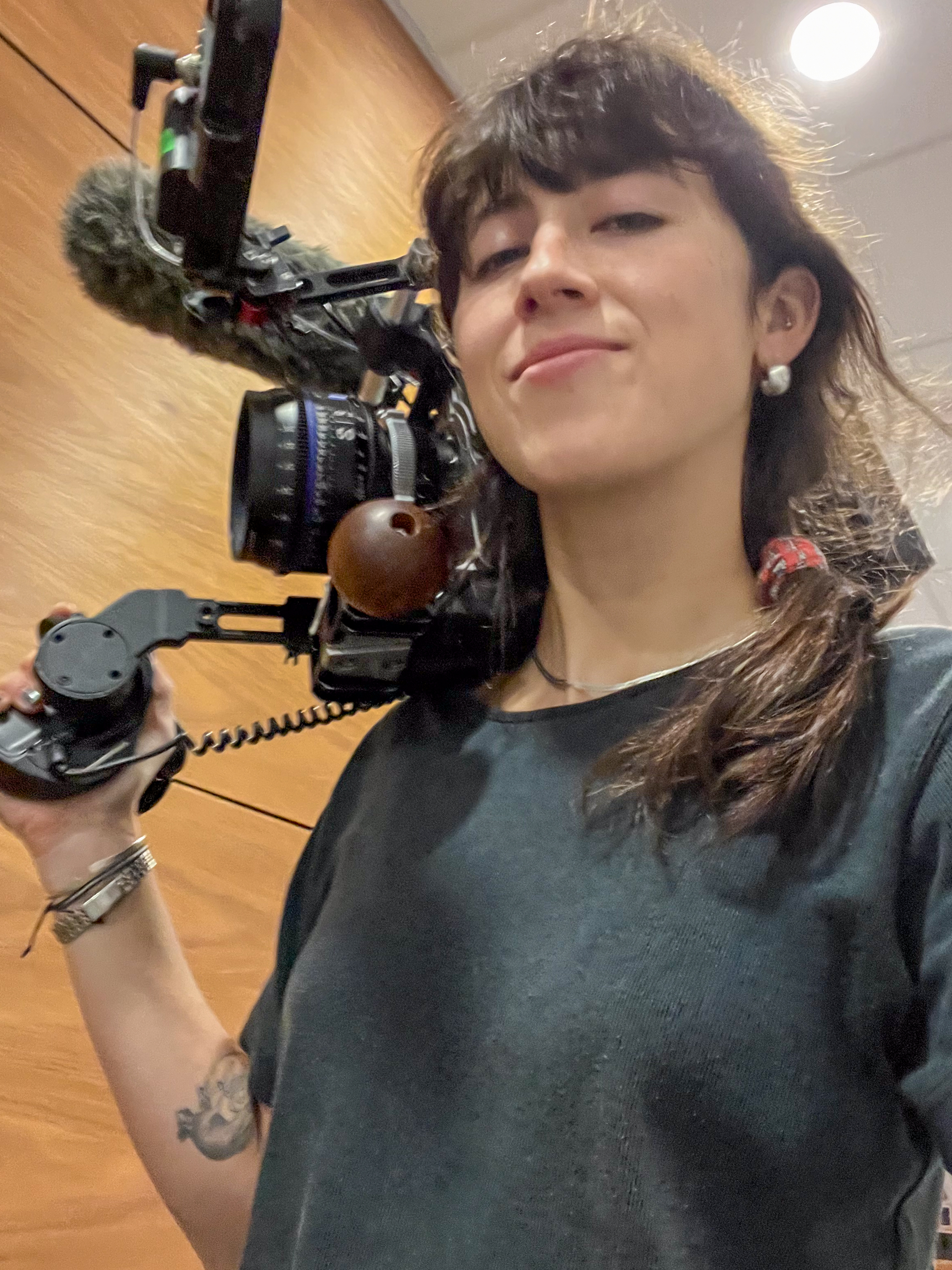![]()
When cinematographer Carissa Henderson joined director Sarah Dowland to shoot the award-winning documentary “Sue Bird: in the Clutch,” she had no idea the challenges and adversity the film would have to overcome before finally premiering at the 2024 Sundance Film Festival. The documentary follows WNBA star and 5-time Olympic gold medalist Sue Bird for the final chapter of the athlete’s illustrious 21-year career. It was an uphill battle to acquire funding and support for the film, despite the undisputable impact Bird has had on women’s sports. Henderson chose three ZEISS CP.3 lenses to use along with her 70-200mm Canon zoom to capture the inspirational story.
Dowland and Henderson began filming in spring 2021. At age 41, Sue Bird, while still top of her game, was the oldest WNBA player. The filmmakers set out to weave together intimate original footage of Bird’s personal and professional life with archival material, painting the portrait of a fierce, charismatic champion of women sports. But it was hardly smooth sailing. Henderson confides, “Despite being a five-time Olympic gold medalist, Sue wasn’t as widely recognized as some of her male counterparts. Getting interest in the film during its production was incredibly challenging.”
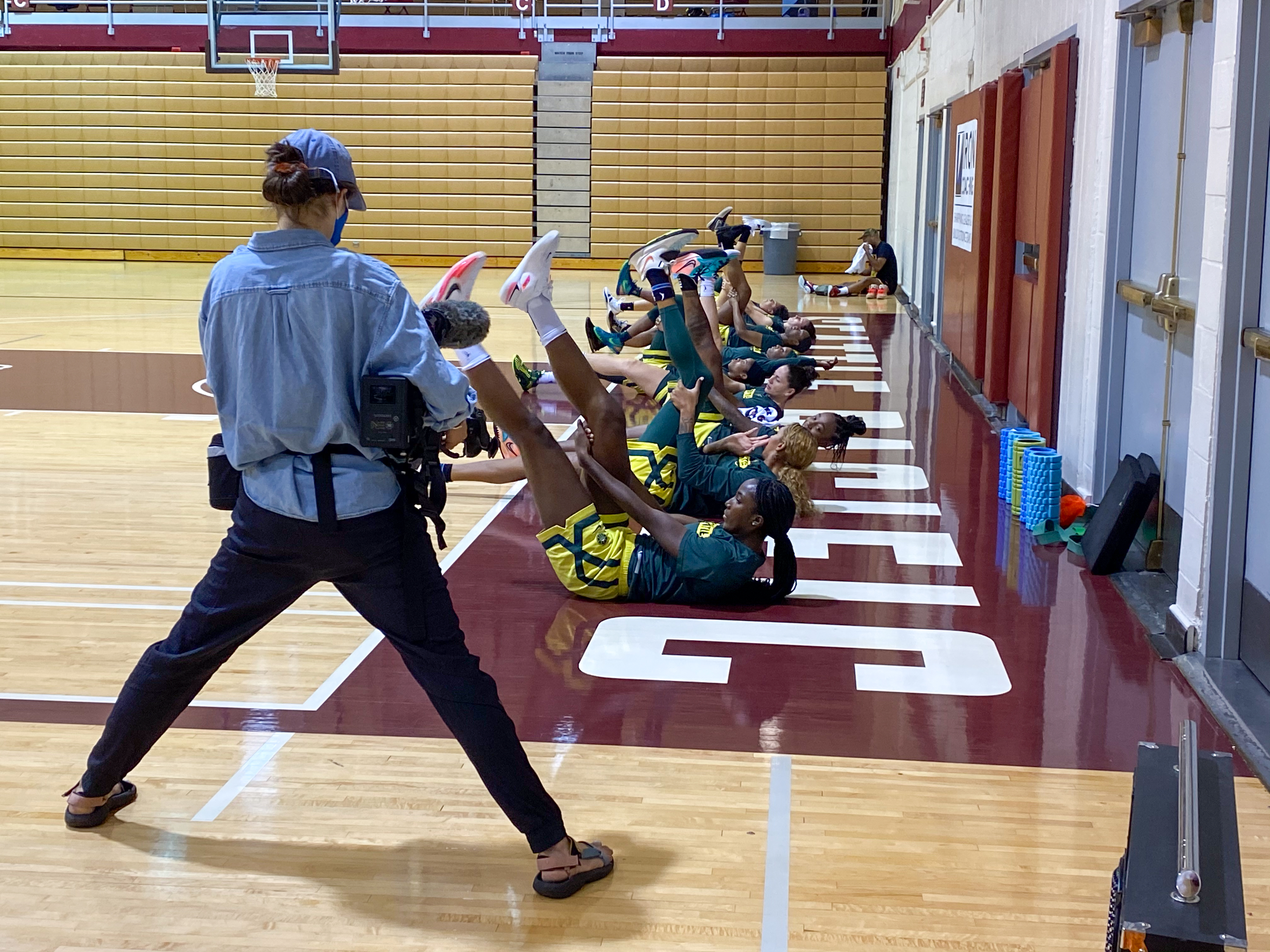 With limited resources the pair jumped into the project. “In 2021, we were still in the uncertain throes of the early stages of pandemic. It was a grueling year, but just being around Sue and witnessing her sheer force of will, both on and off the court, was incredible,” says Henderson. Bird traveled to Japan for the postponed summer Olympics and acted as flag bearer. “Much of society was still in a lockdown with sporting stadiums nearly empty. Those scenes capture the strange isolation of that time, making the story and character insight even richer despite the logistical challenges.” Bird nabbed her 5th Olympic medal before returning stateside, where her team, the Seattle Storm, suffered a loss in playoffs. Inspired by fans chanting “one more year,” Bird decided to play another season.
With limited resources the pair jumped into the project. “In 2021, we were still in the uncertain throes of the early stages of pandemic. It was a grueling year, but just being around Sue and witnessing her sheer force of will, both on and off the court, was incredible,” says Henderson. Bird traveled to Japan for the postponed summer Olympics and acted as flag bearer. “Much of society was still in a lockdown with sporting stadiums nearly empty. Those scenes capture the strange isolation of that time, making the story and character insight even richer despite the logistical challenges.” Bird nabbed her 5th Olympic medal before returning stateside, where her team, the Seattle Storm, suffered a loss in playoffs. Inspired by fans chanting “one more year,” Bird decided to play another season.
The extension in production was a curveball that proved fortunate for the filmmakers in at least one regard. Henderson explains, “After the Olympics, we began acquiring additional funding, and I was able to rent lenses.” To complement her 70-200mm Canon zoom which had been a fixture during the first year of filming, the cinematographer added a Zeiss CP.3 25mm, a 50mm, and an 85mm lens. While a zoom lens can be a reliable workhorse for documentary, Henderson advocates using primes in her own work. “With primes, the look, composition, and rhythm of your visuals are stronger and more decisive. I became more aware of my own physical presence in any given space and learned to consciously anticipate where a person’s emotions might physically lead them next.”
The documentary returns to the court in 2022 with Bird, the filmmakers do not shy away from portraying the physical and emotional obstacles she contends with. Henderson’s verité approach to capturing Bird during her physical therapy and dealing with old injuries serves as a raw contrast to exuberance of fans and high-action game footage. Along with Bird’s frank voice over, these vulnerable moments emphasize the strange duality of a personal journey that has a serious impact on the sports community beyond her.
The documentary is layered with moments of emotional connection to Bird, carried by the cinematography. Henderson describes, “I would concentrate on capturing her emotions and expressions as a game progressed, going into a sort of Zen tunnel vision mode where I was entirely focused on her reactions and perspective, sometimes to the exclusion of the broader game context.” For Bird’s final WNBA game, the audience is invited to join the emotional rollercoaster–from the high of a startling corner three pointer in the last seconds of the game, to the gut punch sensation as the game is pushed into overtime. As victory slips away, the viewer is dragged along with Bird’s experience.
Throughout the documentary the filmmakers take care to balance Bird’s historic basketball career with the challenges she faced as gay woman contending with ‘ideals’ about how a woman should look and act. The heart of Bird’s story is accessed in the interactions between Bird and her partner, soccer legend Megan Rapinoe. “One of my favorite moments in the film is a one-minute clip of Sue and Megan sitting on the couch at home, reflecting on the evolution of ‘being gay’ over the years,” recounts Henderson.
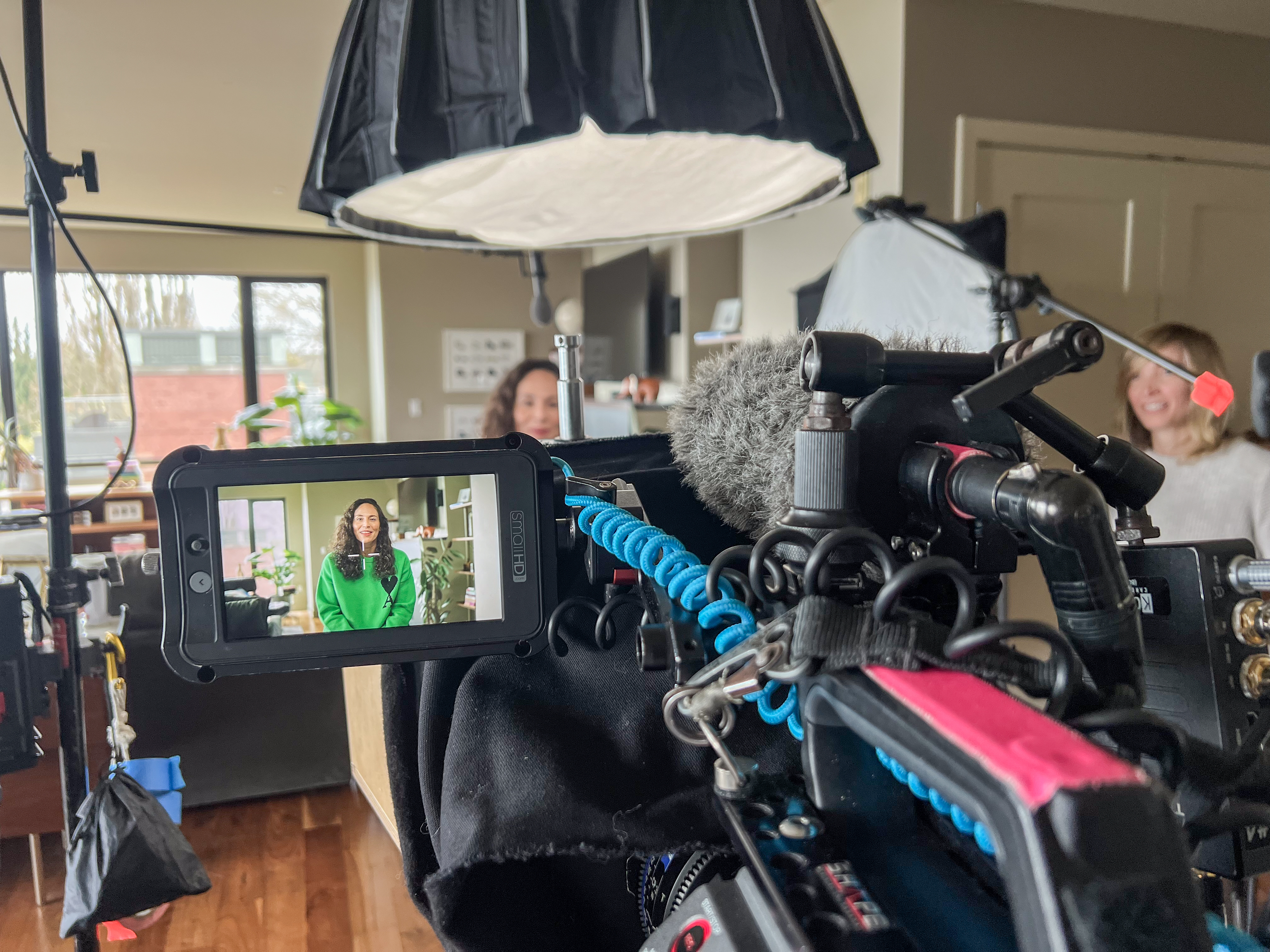 “I was completely tuned in, operating handheld, and using the CP.3, 50mm lens–in direct harmony with the exchange unfolding between Sue and Megan. The result is a continuous shot that holds on Sue dissecting outdated ‘lesbian tropes,’ slowly drifting and eventually landing on Megan, who is dressed precisely to fit the stereotype Sue described.” Throughout the film, Rapinoe pushes Bird to portray herself authentically and thus create positive long-term impact.
“I was completely tuned in, operating handheld, and using the CP.3, 50mm lens–in direct harmony with the exchange unfolding between Sue and Megan. The result is a continuous shot that holds on Sue dissecting outdated ‘lesbian tropes,’ slowly drifting and eventually landing on Megan, who is dressed precisely to fit the stereotype Sue described.” Throughout the film, Rapinoe pushes Bird to portray herself authentically and thus create positive long-term impact.
“Sue Bird: In the Clutch” is an undoubted success; after premiering at the 2024 Sundance Film Festival, the documentary was acquired by Netflix. “We faced numerous rejections and heard the tired line ‘nobody watches women’s sports,’” recalls Henderson. “When we learned that the film was accepted into Sundance, we were all thrilled. In Sue’s words, ‘We were told ‘nobody cares’, and then we got into f*cking Sundance!’” After three years of intense filming, the documentary has received the recognition it deserves. “Our goal was to create a cinematic film that felt both personal and polished, and the lenses played a key role in achieving that vision.”
“Sue Bird: In the Clutch” is available to watch on Netflix.
Read the full interview with cinematographer Carissa Henderson: https://lenspire.zeiss.com/cine/en/article/carissa-henderson-chooses-zeiss-cp-3s-to-lens-bts-story-of-basketball-olympian-sue-bird-in-the-clutch/
